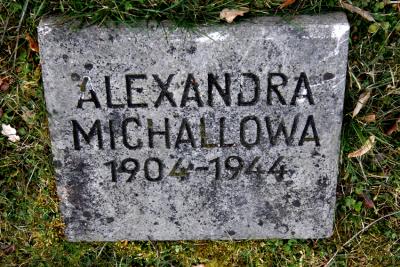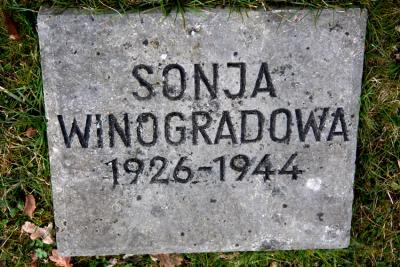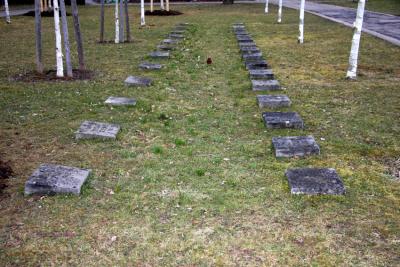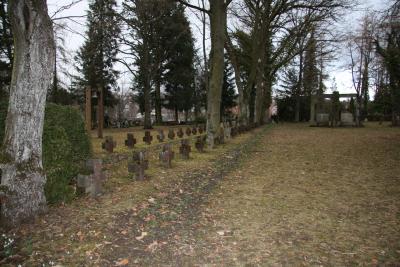Böblingen
The only documented name of a Pole appears in the chronicle of the town, in which the Allied Forces' air raid of the 7th of October 1943 was described. A 32-year-old Polish woman Valeria Tworziolly, a forced labourer, lost her life then. On the general list of the war victims buried at the cemetery, she was recorded under number 203 as Zworzyllee Vallina, born on the 13th of March 1911 in Dubreski/Krakau Polen, deceased on the 8th of January 1943 (both records retain the original German spelling). The prisoners of war mentioned are:
KEMONA EDWARD
* 1.9.1914
† 29.11.1945, buried in the 16th row of the plot in grave number 2
LEWANDOWSKI STEFAN 29 y.o.a.
† 24.12.1945, buried in row 16a grave number 1
For decades, the problem of forced labour in the area of Böblingen during the Second World War was passed over in silence. The only testimony of that time were the graves of the forced labourers at the local cemetery. On the edge of the necropolis, in its oldest part, there is a small plot with 32 tombstones of Polish children born and deceased in the years 1946-1950. The dates of birth and death coincide with the date of existence of the Displaced Persons camp, which consisted of the Polish part with 82 inhabitants and the Russian part with 2,800 inhabitants. At the end of the camp's existence, almost exclusively Poles remained there. Children were born at the maternity wards in Böblingen and Sindelfinger. The documents preserved in the local archives specify the causes of death of children, namely typical childhood diseases and congenital defects. The death rate among children was also influenced by the poor living conditions in the camp.
After the prescribed period of time expired, other graves were levelled. However, 32 graves of Polish children and one German child, protected by German law, survived, and are today a testimony of the war crime. As the years passed, the tombstones were destroyed. It was not until 1998/1999 that conservation work began on the initiative of the inhabitants of Böblingen. Only nine stones were preserved in their original form, the others were replaced by stone cubes on which the basic data of the deceased were engraved.




